We live in zone 5b/6a. We’ve already had temperatures below 20°F and snow. But that didn’t keep us from having fresh vegetables from the garden. Find out what’s in our winter harvest.
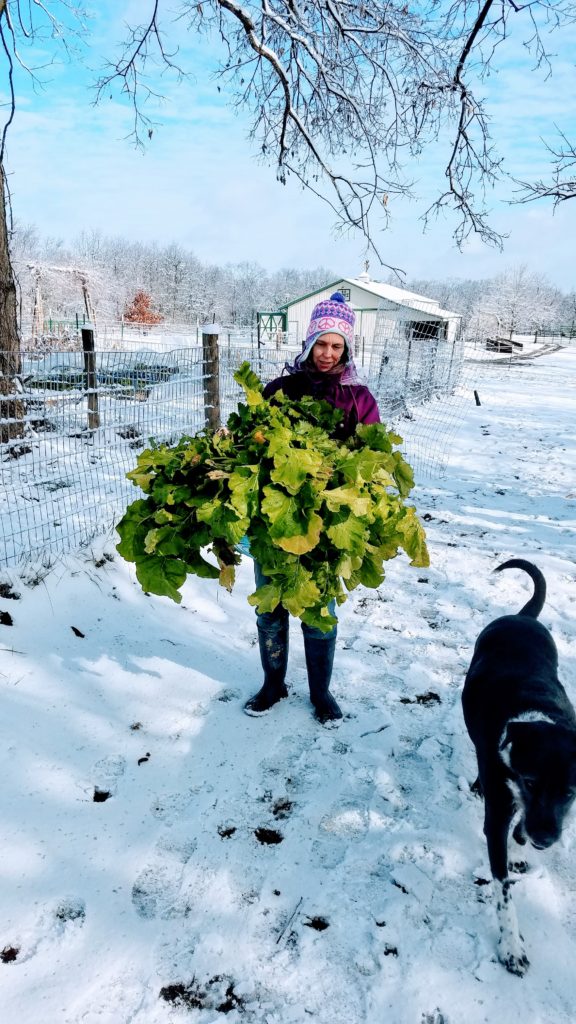
Trial, error, and eventual success. Mostly.
Despite the cold temperatures we have been able to have a winter harvest. In the past, we have tried using the old method of covering delicate plants with fabric to try to protect them from the cold. To be honest, this wasn’t really successful even for protection from light frosts. This year we tried something different and it worked so much better, though it still needs some tweaking.
Low tunnels make a winter harvest possible
As I mentioned in the parsnip video, we created some low tunnels to extend the season for a winter harvest. We used 3/8″ rebar as posts, pounded 6″ into the ground 3 feet apart along both sides of the beds we wanted to protect. The rebar supported hoops, half-circles of flexible 1/2″ PEX. These half-circles extend only 1.5 feet from the ground. That gives enough room for most of the plants that are more cold tolerant. We attached a center spine along the top of the hoops with zip ties, connecting the hoops of a bed together like ribs.
Over this framework, we covered the beds with 6 mil clear construction plastic sheeting, which was held tight to the ground with heavy objects we had on hand, such as spare fence posts and rocks. This creates a mini-greenhouse that can be removed and reused each year without too much difficulty. The weights not only keep the plastic over the rows but help protect the plastic from ripping in the strong wind gusts we sometimes get. So far, so good! On the random warm or sunny days, we pulled the plastic back, allowing the plants and ground another chance for direct sun and warmth before the temperatures finally stay too cold for the season. In addition, the ends or sides are popped open on warm and sunny days to prevent the low tunnels from becoming too hot, overheating the plants.
It was fairly easy to pull back the plastic for the winter harvest.
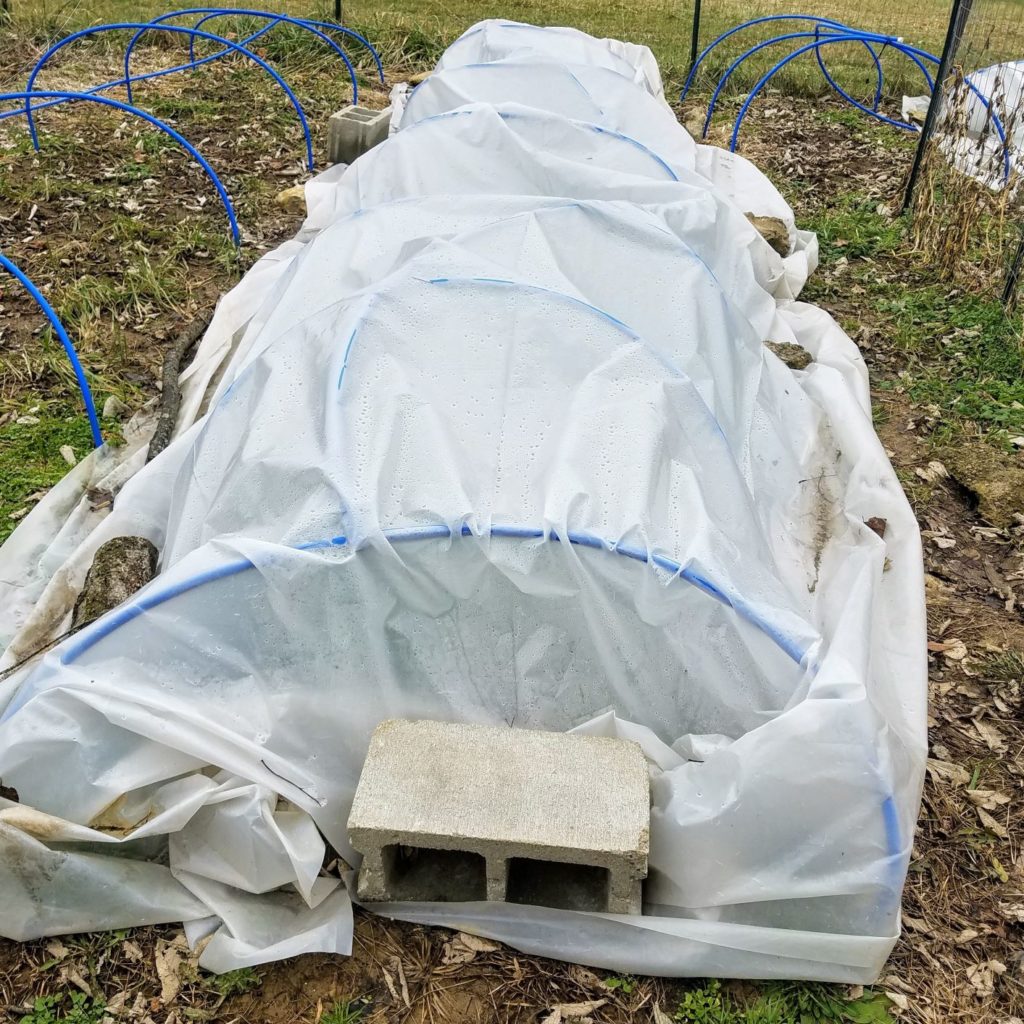
Changes planned for next year’s winter harvest
Some of the snow and heavy rains built up on the plastic sheeting and pushed the ribs of the low tunnels apart or together in spots. Pulling back the plastic removes the snow, but in the meantime, the weight of the plastic and rain or snow down was on the plants. As well, it brought the cold closer to the plants, making it easier for them to be damaged by freezing. To mitigate this for next year, we will either add additional ribs or use larger diameter rebar and PEX tubing in order to have a stronger skeleton to our low tunnels.
In addition, gaps at the ends and along the sides of the tunnels where the plastic was not sufficiently weighted down allowed cold air to blow in, leaving the plants nearly as exposed as if they were out in the open. This caused some freeze damage to a portion of our lettuce, greens, and beets. Next winter, we might benefit from cutting the plastic sheeting so that there isn’t quite as much to deal with at the ends of the rows and be more diligent in keeping the sides sufficiently held down.
What was in our winter harvest
Despite some challenges, we managed to have some success in the winter garden.
Chinese (Napa) cabbage did very well.
The rest of the cabbages didn’t get huge, but they also didn’t die. So, there’s room for improvement, but it wasn’t a total failure.
Turnips also did great.
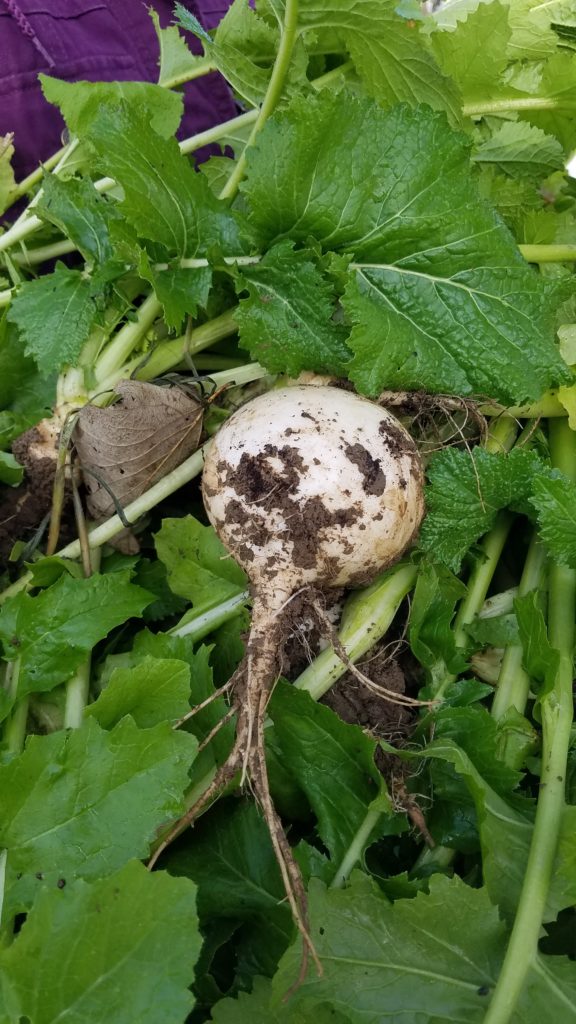
Kale, spinach, chard, lettuce and bunching onions are plugging along. Despite a bit of damage from freezing, most have survived and are continuing to give us greens.
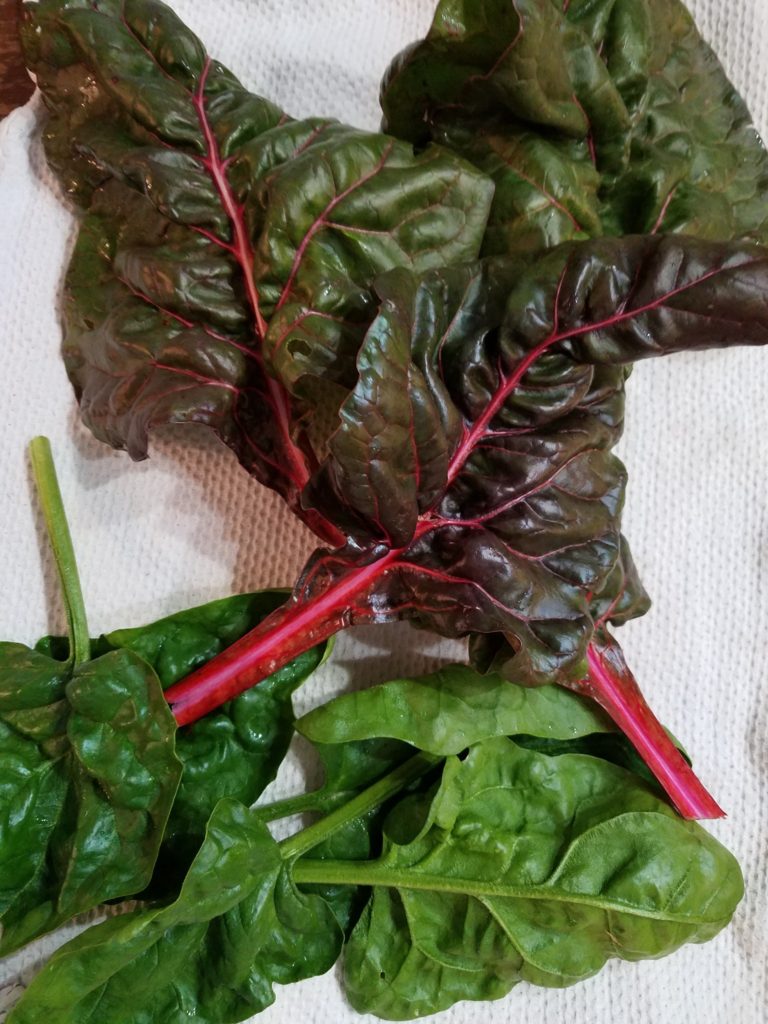
The beets didn’t get very big and I’m not sure why. I’ll have to decide what we might do to improve that for next year.
Carrots didn’t get very big, but I know why and it was totally my fault. I didn’t get very much thinning done early enough. They were more crowded than they should be to have enough room to grow. But… they still taste good. I have given myself a talking to and will try to do better next year.
Anything else we tried, cucumbers and beans are coming to mind, gave up very early in the cold weather. I think they suffered from cold air finding its way through gaps in the plastic sheeting. Next year – try, try again.
BONUS: weeds. Some weeds are thriving in the low tunnels, especially chickweed. And while it is very nutritious for us people, the other 2 legged creatures on the farm, the chickens, benefit most from this unexpected gift. And let me tell you, they think it must be their birthday every time they get a bunch. It’s just our subversive attempt to get more nutritious eggs with darker yolks.
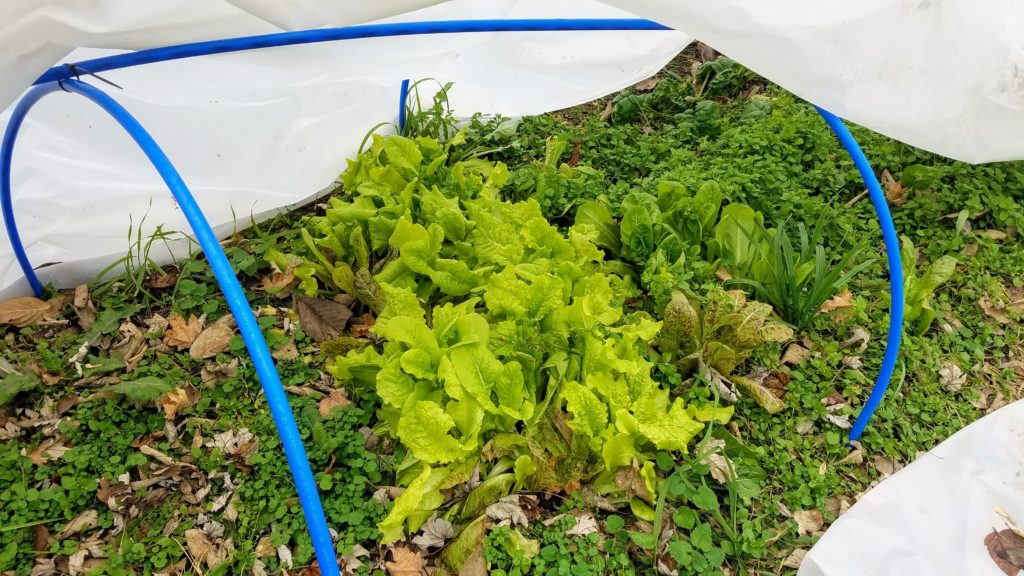
Watch the Video
Earlier Post: Parsnip Harvest

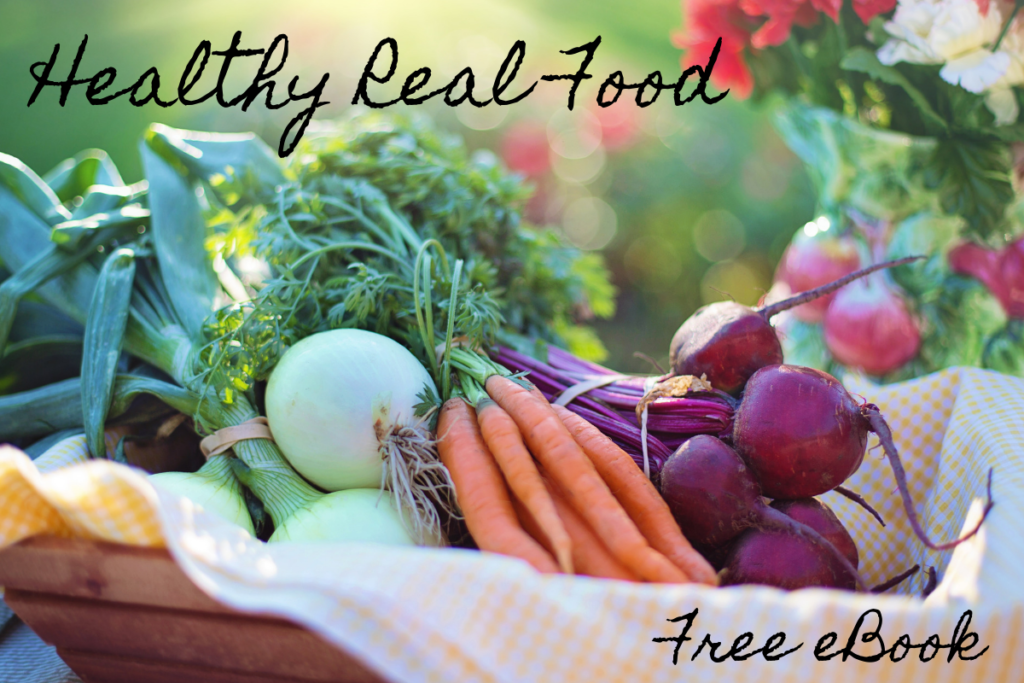
[…] Winter Harvest […]